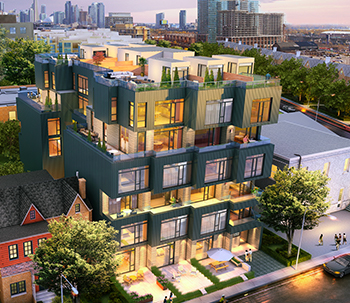
In 2019, the City of Toronto changed policies to encourage laneway housing. This is a big step forward after so many years of advocacy to change policies. Why laneway housing? Because it has the potential to unlock potential access to more affordable housing options in Toronto. It is increasingly difficult to enter the housing market due to lack of affordability Canada. Take this quote from a recent article in the Financial Post: “Across Canada, it takes 13 years of full-time work for the typical Canadian between age 25 to 34 to save for a 20 per cent down payment on an average priced home. In Metro B.C., it takes almost three decades to afford a home with 29 years worth of thriftiness, while saving for a spot in the Greater Toronto Area requires 21 years of painful penny-pinching.”
Pricing increases have also constrained affordability. Another recent article: “Prices have soared almost 60 per cent in the last five years in Canada’s biggest city, and are up another 3 per cent already this year”
Laneway suites were initially brought to the City’s attention in 2006; however, it was deemed unacceptable due to the complications with safety, costs and utilities. After years of fighting the policies and with the help of many architects’ advocacy, by 2018, laneway houses were finally permitted in Toronto. One of the first laneway houses designed and built for Toronto was our laneway project with LGA Partnership. Featured in The Globe and Mail, Dwell and Designlines Magazine, the 1,450 sq.ft. space transformed what was a late 1800’s laneway structure.

While the fight continues for laneway suites to become available, the right steps are being taken. In 2019, the City encouraged the development of laneway suites where possible by offering the “Affordable Laneway Suites Program”. Forgivable loans of up to $50,000 are available to property owners after 15 years of occupancy and a record of maintained affordable rent.
New city by-laws were also passed this month to allow for access for fire & emergency services to be shared with neighbours. What does this mean? Previous laws required 1 m emergency services access for each suite. But because space and property lines are challenging in small laneway areas, the City of Toronto has provided a new solution where neighbours can share the 1 m pathway with a “Limiting Distance Agreement”.
Laneway suites provide another option towards the densification that Toronto needs. With the population in Toronto growing rapidly, it’s important to maximize the space that we have, while making the process as simple as possible.
References:
It may take millennials 29 years to save enough to afford a home in Canada’s biggest cities
Shockingly high Toronto home prices making millennials’ hunt for housing a frustrating ordeal
More on this project:





